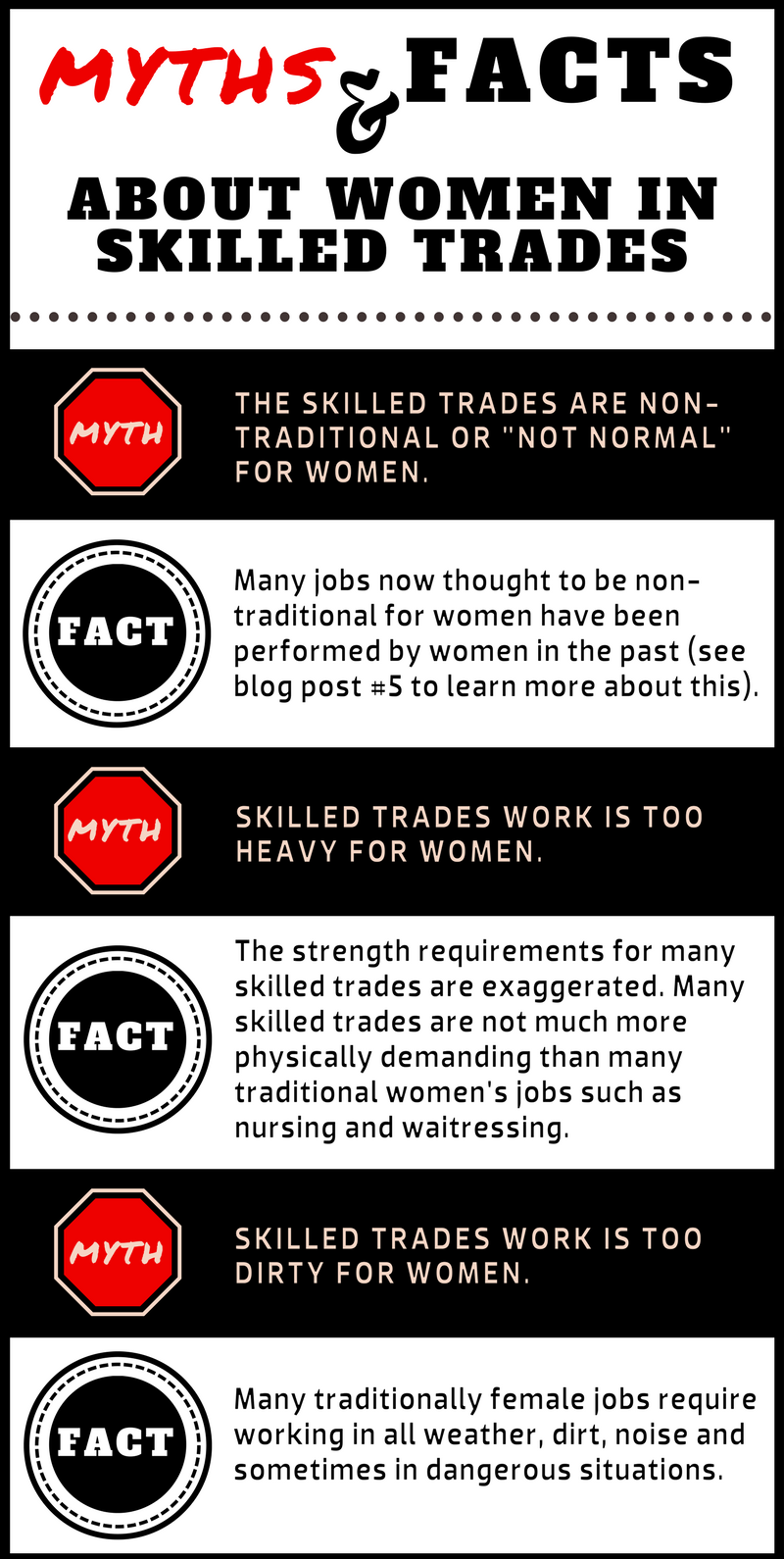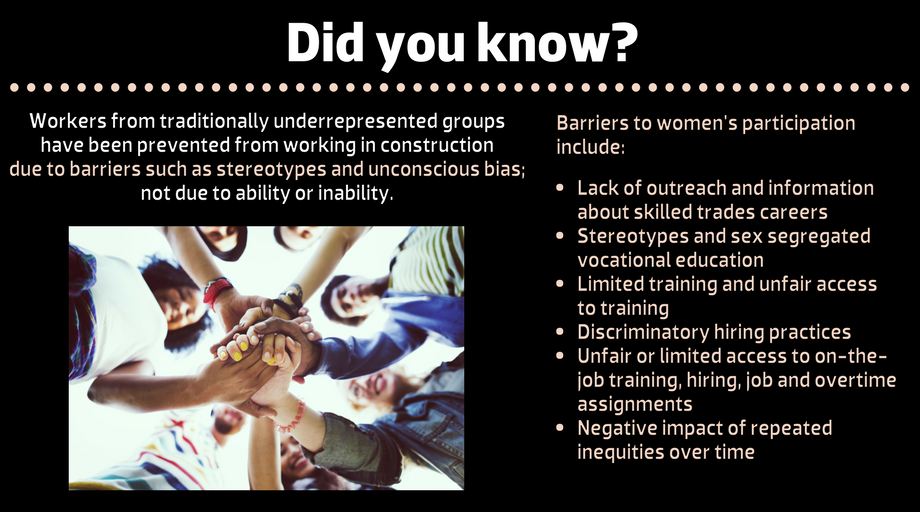

The challenges:
- Outreach and recruitment to traditionally underrepresented groups
- Attracting and retaining the brightest and the best from all sources of labour
The solutions:
- Eliminate non-job factors such as gender-specific traits and/or racial, age, dis/ability, appearance preferences or culturally specific behaviours from recruitment, job evaluation and advancement processes
- Treat people as professionals, not as stereotypes that make assumptions about job ability/inability
Eliminating non-job factors from recruitment includes planning the interview process
- Use an interview panel of at least two people rather than a single interviewer. This may capture information that a single interviewer may overlook.
- Strive to include panel members from underrepresented groups. This can provide perspectives from a different viewpoint.
- Train interviewers on unconscious bias and awareness of invisible barriers affecting women and other underrepresented groups.
- Identify standardized interview questions based on the qualifications required to be successful in the skilled trades, not on traits associated with gender, race or culture.
- A few key traits to look for, in addition to evidence of technical training and skills, are a candidate’s time management skills, ability to overcome obstacles, and ability to work well in a team.

——-
OUR NEXT INSTALLMENT: Developing effective communication skills to create and sustain a respectful and inclusive workplace
Previous installment: How bias can influence personal and business decisions
——-
Resources:
- Advancing Women in the Skilled Trades. A project from the YWCA Hamilton and Workforce Planning Hamilton. Available at www.advancewomenintrades.com/recruit
- Build Together Women of the Building Trades and Canada’s Building Trades Unions. Building Cultural Competency and Respect for Diversity. Available at www.buildtogether.ca/resources/respectful-workplaces
——-

– JOIN THE CONVERSATION –
What is the single most important personal quality of an excellent tradesperson?

This project has been funded by Status of Women Canada.

Respectful and Inclusive Workplaces
